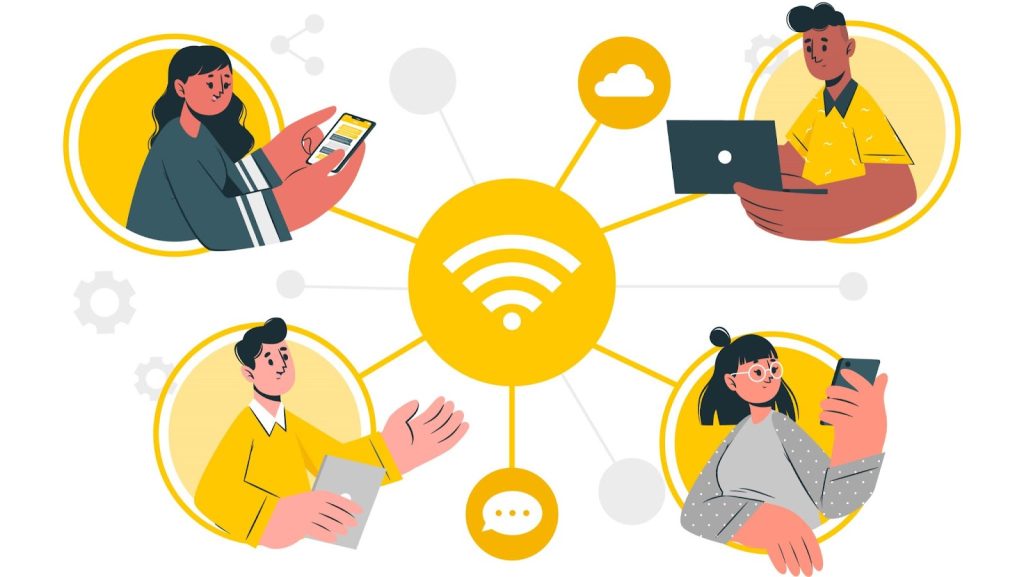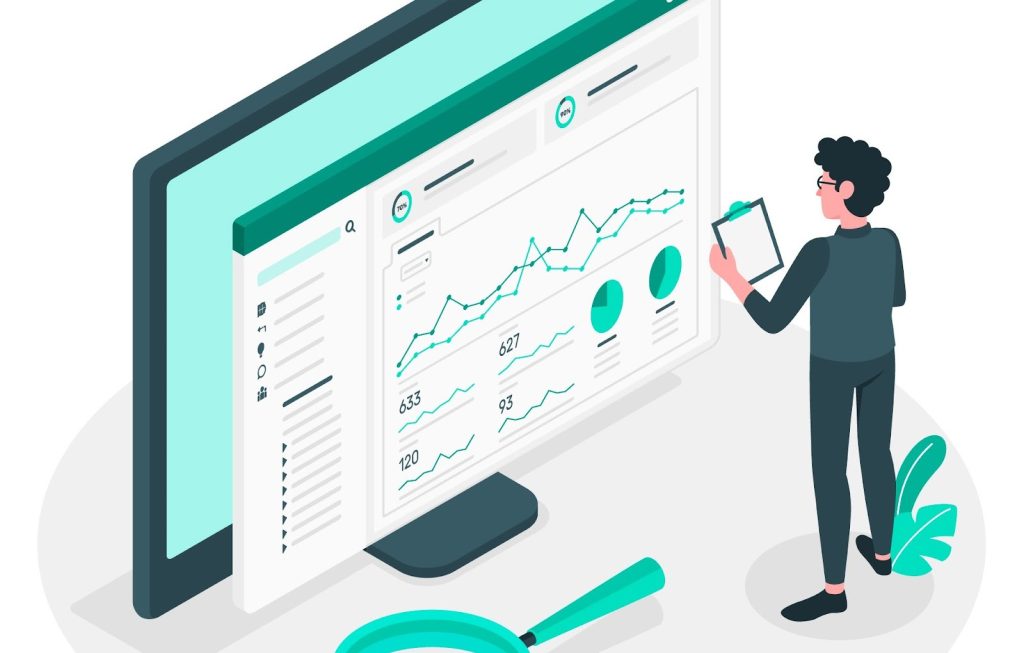Trade shows have long been beneficial in fostering business growth, enabling networking opportunities, and showcasing innovative products and services. In the ever-evolving landscape of business events, the integration of technology has brought about significant transformations. One such game-changer is the rise of trade show networking platforms. These comprehensive solutions offer a wide array of benefits, revolutionizing the way businesses plan, execute, and maximize their participation in trade shows. In this article, we’ll explore the extensive advantages that come with adopting a networking platform for trade shows.
What is a Trade Show Networking Platform
Before delving into the benefits, let’s establish a clear understanding of what a trade show networking platform is. A Trade Show Networking Platform is a digital solution designed to facilitate and enhance networking activities within the context of a trade show or industry exhibition. These platforms leverage technology to connect exhibitors, attendees, speakers, and sponsors, providing a virtual space for interactions, collaborations, and information exchange. The goal is to enhance the networking experience traditionally associated with physical trade shows in an online environment.
Untold Benefits of Using a Trade Show Networking Platform or App
1. Global Reach and Accessibility:

A. Breaking Geographical Barriers:
One of the primary advantages of leveraging networking platforms for trade shows is the ability to transcend geographical limitations. These platforms enable exhibitors and attendees to participate in events from anywhere in the world, eliminating the constraints of travel costs and time zone differences. This global reach expands the potential audience, fostering international collaborations and partnerships.
B. Inclusivity for Remote Participants:
Networking apps make trade shows more inclusive by accommodating remote participants who might otherwise miss out on valuable opportunities. Through virtual attendance, individuals who cannot physically be present at the trade show can still engage in networking, access resources, and participate in discussions, contributing to a more diverse and enriched event experience.
2. Enhanced Networking Opportunities:

A. Targeted Matchmaking:
Networking platforms leverage advanced algorithms to facilitate targeted matchmaking. Exhibitors and attendees can create detailed profiles, specifying their interests, products, and goals. The platform then intelligently matches participants based on compatibility, ensuring that connections made during the trade show are more relevant and valuable.
B. Efficient Appointment Scheduling:
These platforms provide tools for scheduling appointments and meetings. Attendees can browse through profiles, identify potential partners, and schedule one-on-one meetings. This streamlined process enhances the efficiency of networking, allowing participants to make the most of their time and engage in purposeful interactions.
C. Access to Diverse Industry Professionals:
Networking platforms attract a diverse array of industry professionals, from established businesses to startups and emerging talents. This diversity creates a rich networking environment, exposing participants to a wide range of perspectives, and potential collaborations that might not have been possible in a traditional trade shows.
3. Maximized Exhibitor and Attendee Engagement:

A. Interactive Virtual Booths:
Networking apps offer virtual booth spaces that allow exhibitors to showcase their products or services in a visually appealing and interactive manner. Attendees can explore these virtual spaces, view demonstrations, and engage with exhibitors through chat features, creating a dynamic and immersive trade show experience.
B. Live Demonstrations and Presentations:
The integration of live streaming and virtual presentation features enables exhibitors to conduct real-time demonstrations and presentations. This not only enhances the visibility of their offerings but also allows attendees to interact directly with exhibitors, ask questions, and gain a deeper understanding of the showcased products or services.
C. Gamification for Engagement:
Networking platforms often incorporate gamification elements into trade shows. Attendees can participate in quizzes, challenges, and contests, adding an element of fun and competition to the event. Gamification not only boosts engagement but also encourages attendees to explore different booths and interact with exhibitors.
4. Data-Driven Insights and Analytics:

A. Comprehensive Attendee Analytics:
Networking platforms provide organizers and exhibitors with detailed analytics on attendee interactions. From the booths visited to the duration of engagement, these insights offer a comprehensive understanding of attendee behavior. This data-driven approach empowers exhibitors to tailor their strategies, measure the success of their participation, and refine their future trade show efforts.
B. Lead Generation and Follow-up:
The platform’s analytics also aid in lead generation. Exhibitors can identify potential leads based on attendee interactions and engagements. This information streamlines the follow-up process, allowing exhibitors to reach out to interested parties promptly, nurture relationships, and convert leads into meaningful collaborations or business opportunities.
5. Cost-Efficiency and Sustainability:
A. Reduced Travel and Logistics Costs:
Traditional trade shows often involve significant expenses related to travel, accommodation, booth setup, and logistics. Networking platforms drastically reduce these costs by providing a virtual space for participation. This cost-efficiency allows businesses of all sizes, including startups with limited budgets, to access and benefit from trade shows.
B. Environmental Impact:
The virtual nature of networking apps contributes to a more sustainable approach to trade shows. By eliminating the need for physical materials, travel, and booth construction, virtual trade shows reduce the carbon footprint associated with traditional events. This aligns with the growing emphasis on corporate social responsibility and sustainable business practices.
6. Adaptability and Flexibility:
A. Agility in Adapting to Change:
Networking platforms offer a level of agility and adaptability that is crucial in a dynamic business environment. In the face of unforeseen circumstances, such as global pandemics or travel restrictions, virtual trade shows provide a flexible alternative, ensuring that business interactions and collaborations can continue unabated.
B. Hybrid Event Possibilities:
Networking platforms pave the way for hybrid trade show models that combine virtual and physical components. This hybrid approach accommodates both in-person attendees and those participating remotely, providing a flexible solution that caters to diverse preferences and circumstances.
7. Building Lasting Relationships:

A. Long-Term Networking Opportunities:
Networking platforms facilitate ongoing connections beyond the duration of a trade show. Attendees and exhibitors can stay connected through the platform, fostering long-term relationships that extend well beyond the event. This sustained networking potential contributes to a more enduring impact on business development and collaboration.
B. Nurturing a Community:
The sense of community fostered by networking apps is a valuable asset. Attendees become part of a digital ecosystem where knowledge-sharing, collaboration, and support continue to thrive. This community-centric approach creates a supportive network that extends far beyond the confines of a single trade show. Learn more about the community engagement ideas to elevate your business.

How to Choose Your Best Trade Show Networking App
To end up with the best networking app for tradeshows, there are a few things you need to consider and evaluate the features you’ll get with it.
Key features of the Best Trade Show Networking Platform typically include:
1.Matchmaking Algorithms:
Advanced algorithms are employed to match attendees with exhibitors or other attendees based on their profiles, interests, and goals. Event matchmaking helps in creating meaningful and relevant connections, enhancing the overall networking experience.
2.Meeting Schedular:
Participants can schedule one-on-one meetings with exhibitors, sponsors, or other attendees. This feature streamlines the process of arranging discussions, making it easier for both parties to manage their time effectively.
3.Virtual Booths:
Exhibitors have virtual spaces where they can showcase their products, services, and innovations. These virtual booths may include multimedia presentations, product demonstrations, and interactive content.
4.Live Chat and Video Calls:
Interactive communication tools such as live chat, video calls, or webinars enable real-time engagement. Attendees can communicate directly with exhibitors, ask questions, and participate in live presentations or demonstrations.
5.Discussion Forums and Group Chats:
A Networking platform often includes discussion forums or group chats where participants can engage in broader conversations, share insights, and exchange information with a larger audience.
6.Analytics and Insights:
Comprehensive analytics provide organizers, exhibitors, and sponsors with insights into attendee behavior, booth visits, and engagement levels. Measuring key metrics will help you measure the performance and impact of your event networking. This data-driven approach helps in measuring the success of the trade show and refining strategies for future events.
7.Gamification Features:
Some platforms incorporate gamification elements to make the networking experience more engaging. Attendees may participate in quizzes, challenges, or competitions, adding a fun and competitive aspect to the virtual environment.
8.Document and Resource Sharing:
Exhibitors can upload documents, brochures, whitepapers, or other resources that attendees can access and download. This feature ensures that participants have easy access to relevant information.
9.Social Media Integration:
Integration with social media platforms allows participants to share their experiences, connect with others, and extend the reach of the trade show beyond the confines of the platform.
10.Hybrid Event Capabilities:
Some platforms support hybrid events, allowing for a seamless integration of both physical and virtual components. This flexibility caters to participants who prefer either in-person or remote attendance.
Final Words
The benefits of using a networking platform for trade shows are vast and transformative. These platforms redefine the trade show experience, offering a global reach, enhanced networking opportunities, data-driven insights, cost-efficiency, and the potential for building lasting relationships. By leveraging these platforms, businesses can position themselves at the forefront of innovation, connectivity, and success in the ever-evolving landscape of trade shows.
FAQs
Networking platforms enhance the trade show experience by providing virtual booths for exhibitors, matchmaking algorithms for personalized connections, live chat and video call features for real-time engagement, and comprehensive analytics to measure success and refine strategies.
Networking platforms offer various engagement tools, including live chat, video calls, webinars, discussion forums, and group chats. These tools facilitate real-time communication, information exchange, and interactive participation.
Comprehensive analytics provide organizers, exhibitors, and sponsors with insights into attendee behavior, booth visits, and engagement levels. This data-driven approach helps in measuring the success of the trade show, refining strategies, and improving future events.






